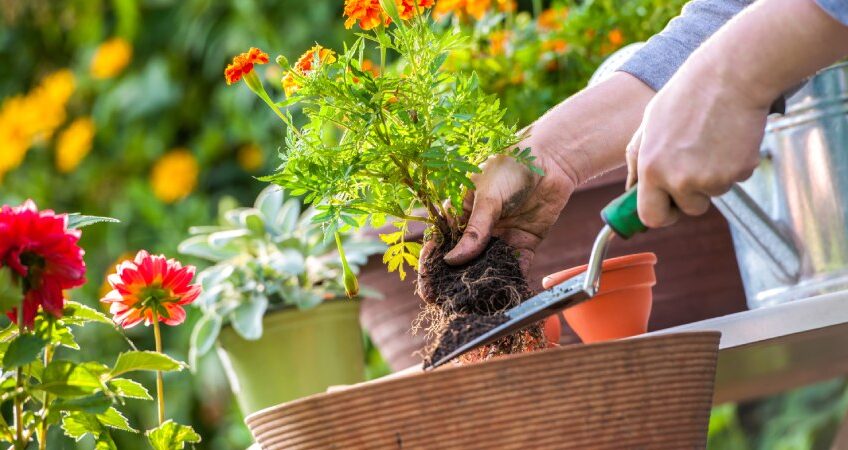Spring is the ideal time to start gardening. However, the garden needs to be prepared for planting after the cold winter. Before you start planting flowering plants and working in your vegetable and fruit garden, complete these essential spring gardening tips to ensure that your garden flourishes.
Cut back last year’s dead growth. Notice what dead material is still lurking — pull out any remaining annuals from last year and cut back lifeless stems and foliage from perennials. (Cut low, but be careful not to damage any new growth starting to emerge.)
Divide your flowers. If your perennials are starting to outgrow their space, aren’t blooming as well as they used to or have a dead spot in the centre, it could be time to divide them. First check that the ground is workable, and that it isn’t too wet. You will know the time is right when you can step on the bed without leaving a footprint. Here’s how:
Insert your shovel about 10 to 15 centimetres from the plant all the way around and gently remove the clump, with as much of the root system as possible. If it’s too large to lift, you may need to cut it into smaller clumps with your shovel before moving. After lifting it, the roots can be separated by hand or clippers. Once you have several smaller clumps, these can be replanted in new holes. Dig them several centimetres wider than the width of the plant and deep enough not to compress the roots. Add a generous amount of compost. As you place the plant in its hole, spread the roots and ensure that the crown (where the plant’s stem joins the root) is at the same depth as it was originally. Water well.
Prune roses. The specifics of pruning depends on the type of rose, but there are some general guidelines for all varieties. Make all your cuts with a pair of sharp pruners about a half centimetre above an outward facing growth bud. Remove any dead growth from your plants. Dead canes (the part that grows from the trunk of the rose bush that holds the branches) can be cut back to the ground. You’ll know they’re dead if they are black or brown. Also remove any canes that are crossing over others and reducing airflow in the centre of the plant, and any that are pencil width or narrower. If you had trouble with rust or blackspot last year, be sure to rake up all foliage from the soil around the plant — and don’t add it to your compost.
Rake leaves off bulbs. If you piled leaves on your beds as winter mulch or put down chicken wire to deter squirrels, now is a good time to remove them from soil where bulbs are planted. The sun will warm the soil and the new bulb growth will not have to fight through the mat of leaves or the wire. The leaves can be moved to any bare soil to keep down weeds and add organic matter to the soil.
Rake lawn. Use a metal rake to remove any twigs, leaves and debris. Give a firm raking to aerate the soil and then sow seed in any bare patches.
Prune blooming spring shrubs (like forsythia and lilac) after blossoming. A good rule of thumb is not to remove more than 25 to 30 per cent of the shrub. If too heavily pruned, they can go into panic mode and produce a lot of sucker growth (quick growing, straight stems that emanate from the root area of the plant and produce a thicket of growth.) Remove any branches that are getting in the way of walkways or buildings and any broken or damaged branches. Now step back, have a look at your plant and see if there are any branches that could be pruned to improve its overall look and shape.
Si necesita ayuda, llámenos o envíe un mensaje.

